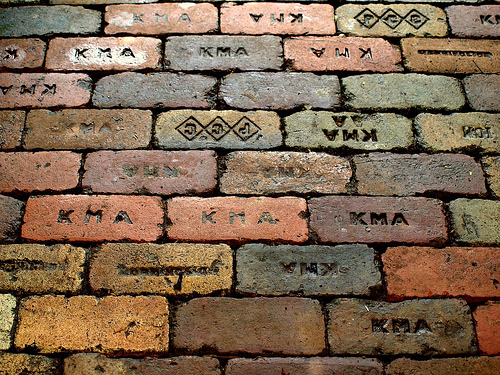Brick flooring is a unique and rustic flooring option that you can use for designing your home. In addition it is also fire proof and fade-proof that can last for long period of year. However, you need to take good care of the porous brick flooring so that you would be able to maintain its beauty and style. The method of taking care of your brick flooring must be chosen very carefully. For those of you who like to use a solvent-base wax for cleaning the floor, you must make sure that you seal it in the first place before you could maintain its shine. As for a water-base polish, you are required to occasionally strip the floor’s wax buildup and also always need to discolor of the wax that you used. The most common and suitable method for you to use is to keep it sealed and waxed.
To care for your brick flooring, you need:
- A commercial sealer for brick floor
- A mop
- Broom
- Vacuum
- 1 cup of vinegar
- A gallon of water
- Scrub brush or floor-scrubbing machine with brush attachment
Caring for Brick Flooring
Taking Care of your Brick Flooring
- First thing that you need to do is to sweep all the dust and debris on the surface of the brick floor.
- You can even vacuum them for easy way of getting rid of the dust and debris.
- Mop the brick floor once you finished doing the above step.
- By damp mopping can also remove tougher particles and mud. It will also prevent dirt from building up on your brick floor.
- You need to mix a cleaning solution by mixing a cup of vinegar along with a gallon of water in order to leave a shine without the need of polishing your brick floor.
- You can even vacuum them for easy way of getting rid of the dust and debris.
You will find your brick flooring consist of clay (either vitreous or semi-vitreous). Sometimes bricks are also made of sand, lime and concrete while some are manufactured with a rough side in order to improve its quality of slip resistance.
- If you do not want to strip the brick floor, you can use a solvent-base wax where you can even apply it over a water-base polish. The content of the solvents in the wax helps you dissolve the layer of wax on the brick floor that you have on the floor during application of the solvent thus preventing any wax buildup.
- However, a water-base polish does not allow you to apply it over a solvent-base polish.
- However, a water-base polish does not allow you to apply it over a solvent-base polish.
It is not recommended that you clean your brick floor by using acids, strong soaps or even abrasives.
- If you want to remove the wax buildup, you can apply a wax-stripping product using a scrub brush or floor-scrubbing machine that comes with a brush attachment.
- If you do not have any of the above items, you can simply use a standard type mop.
- Then, you must ensure that you completely rinse your brick flooring thoroughly once you have applied a stripper solution. By doing this, you would be able to remove any of the lingering wax that stays on the floor.
- If you do not have any of the above items, you can simply use a standard type mop.
- Another method of cleaning that you can apply is by using a solution that has a moderately strong alkali.
- For example, you can use washing soda or trisodiumphosphate or even a cleaner that contains TSP.
- You can add one tablespoon of the above material into a gallon of warm water and apply the solution using a stiff scrub brush to scrub the surface of your brick floor.
- Once finished, you need to rinse the floor with lots of warm water to remove all the solution.
- Make sure that you always protect your skin by wearing hand gloves whenever you are using the above solutions.
- For example, you can use washing soda or trisodiumphosphate or even a cleaner that contains TSP.
Remember that for brick floors which are more than 50 years, it might be soft and easily damaged if it is being clean vigorously. For this reason, you should test the solution on a corner first to see whether it is suitable or not. If it is not suitable, you should just dust or sweep the brick floor using a broom.
Always remember that whenever you want to care for your brick flooring,
- It is not recommend that you seal your brick floor even though it does make it easier for you to clean the brick. Once you sealed the brick, it will also seal along any moisture which has already inside the brick and this interior moisture might not be able to escape. Therefore it s important for you to allow your bricks to breathe.


